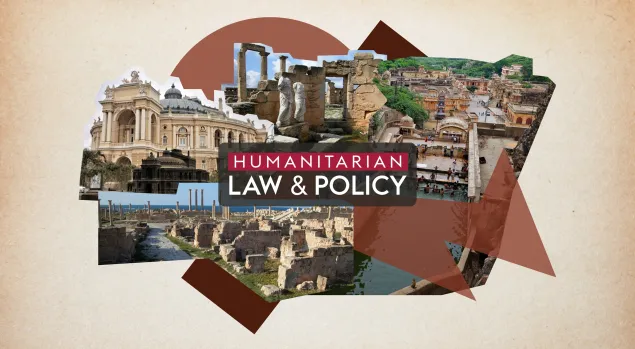Cultural property and international humanitarian law
Cultural property is protected during war in two ways.
First, because it is normally civilian in nature, the general provisions of international humanitarian law (IHL) protecting civilian property apply.
Second, specific protection recognizing the cultural heritage of every people is enshrined in the 1954 Hague Convention for the protection of cultural property during armed conflict, which was complemented by the 1977 Additional Protocols. It has also become part of customary international law.
The sad reality is that, over the centuries, many works of art have been lost and cultural sites damaged or destroyed in war. While forms of customary protection have existed since the earliest times of civilization, the destruction of World War II prompted the international community to act and provide specific legal protection.
Under the 1954 Hague Convention, each state must act to safeguard its own cultural property against armed attack. This can be done, for example, by moving such property away from potential or actual military action, or in the case of historical sites, by avoiding placing military objectives nearby.
Parties to an armed conflict are not allowed to direct hostilities against cultural property and must avoid incidental damage to cultural property. Using cultural property for military purposes is prohibited.
The Hague Convention does, however, recognize situations where an attack on cultural property may be lawful, namely if it has been turned into a military objective and an attack would be required by “imperative military necessity”.
Occupying powers must protect cultural property under their control from theft, pillage or misappropriation. If cultural property is removed from occupied territory for its own protection, it must be returned at the end of hostilities.
Responding to events during World War II, international law also prohibits the destruction of cultural property as a means of intimidating people under occupation or as a reprisal.
Parties to the Hague Convention are responsible for implementing its provisions and for enshrining the protection of cultural property in their national legislation. They are also required to enforce its provisions in case of violation. At the international level, UNESCO has a particular responsibility to monitor compliance and help protect and preserve cultural property.
In the more than 60 years since its signing, the 1954 Hague Convention has established a clear legal framework. It was reinforced by the 1977 Additional Protocols to the Geneva Conventions, the Rome Statute of the International Criminal Court in 1998, and the Second Protocol to the Convention itself in 1999.









